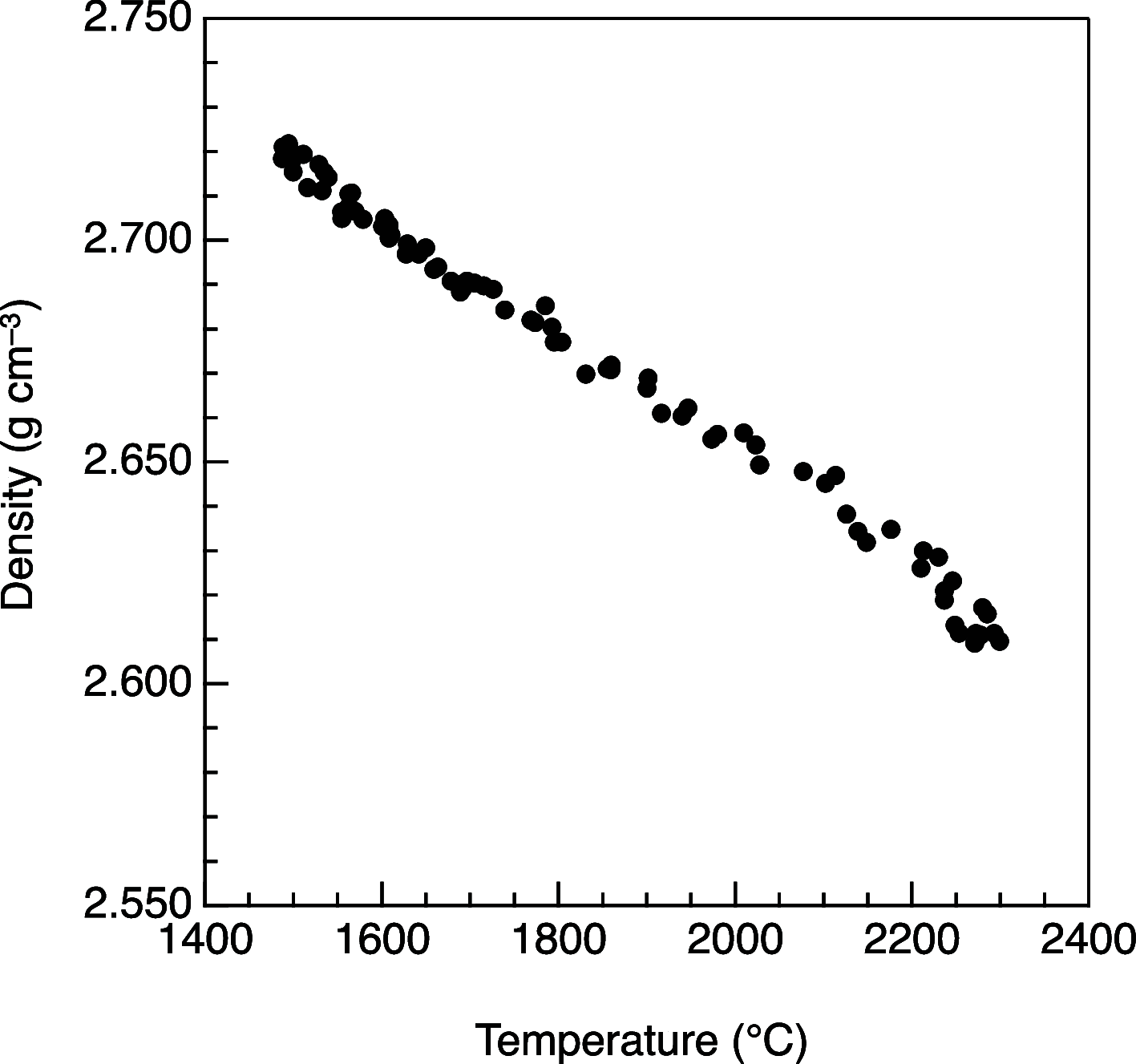Atomic and Electronic Structure in MgO-SiO2
- PMID: 38236195
- PMCID: PMC10839830
- DOI: 10.1021/acs.jpca.3c05561
Atomic and Electronic Structure in MgO-SiO2
Abstract
Understanding disordered structure is difficult due to insufficient information in experimental data. Here, we overcome this issue by using a combination of diffraction and simulation to investigate oxygen packing and network topology in glassy (g-) and liquid (l-) MgO-SiO2 based on a comparison with the crystalline topology. We find that packing of oxygen atoms in Mg2SiO4 is larger than that in MgSiO3, and that of the glasses is larger than that of the liquids. Moreover, topological analysis suggests that topological similarity between crystalline (c)- and g-(l-) Mg2SiO4 is the signature of low glass-forming ability (GFA), and high GFA g-(l-) MgSiO3 shows a unique glass topology, which is different from c-MgSiO3. We also find that the lowest unoccupied molecular orbital (LUMO) is a free electron-like state at a void site of magnesium atom arising from decreased oxygen coordination, which is far away from crystalline oxides in which LUMO is occupied by oxygen's 3s orbital state in g- and l-MgO-SiO2, suggesting that electronic structure does not play an important role to determine GFA. We finally concluded the GFA of MgO-SiO2 binary is dominated by the atomic structure in terms of network topology.
Conflict of interest statement
The authors declare no competing financial interest.
Figures









References
-
- Mysen B.; Richet P.. Silicate Glasses and Melts, Second ed.; Elsevier, 2019.
-
- Price D. L.High-Temperature Levitated Materials; Cambridge University Press, 2010.
-
- Tangeman J.; Phillips B. L.; Novrotsky A. Vitreous forsterite (Mg2SiO4): Synthesis, structure, and thermochemistry. Geophys. Res. Lett. 2001, 28, 2517.10.1029/2000GL012222. - DOI
LinkOut - more resources
Full Text Sources

